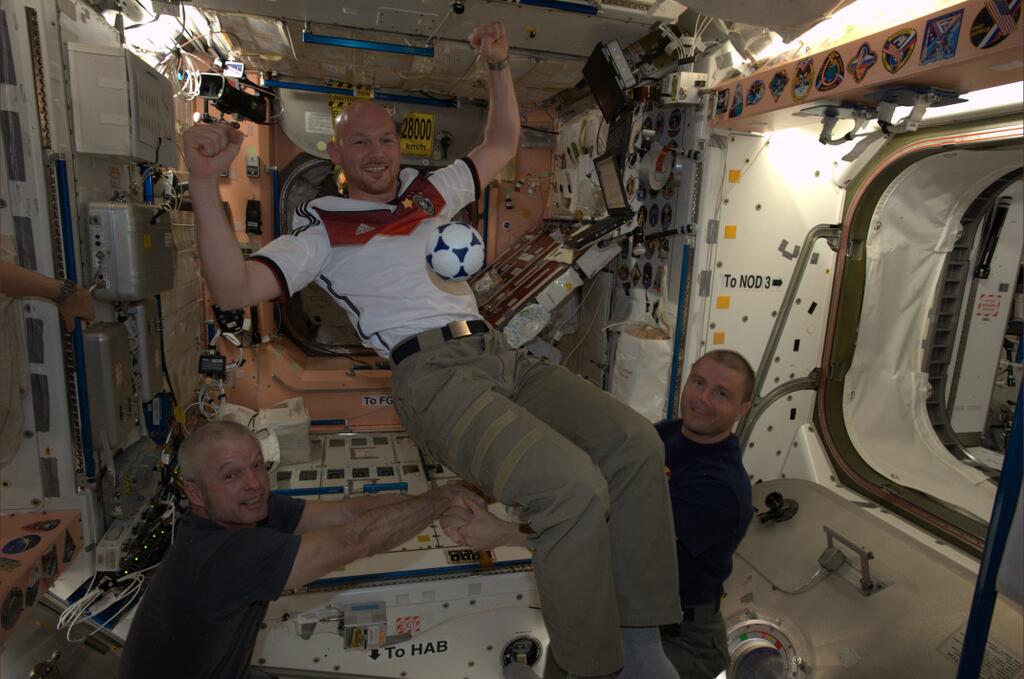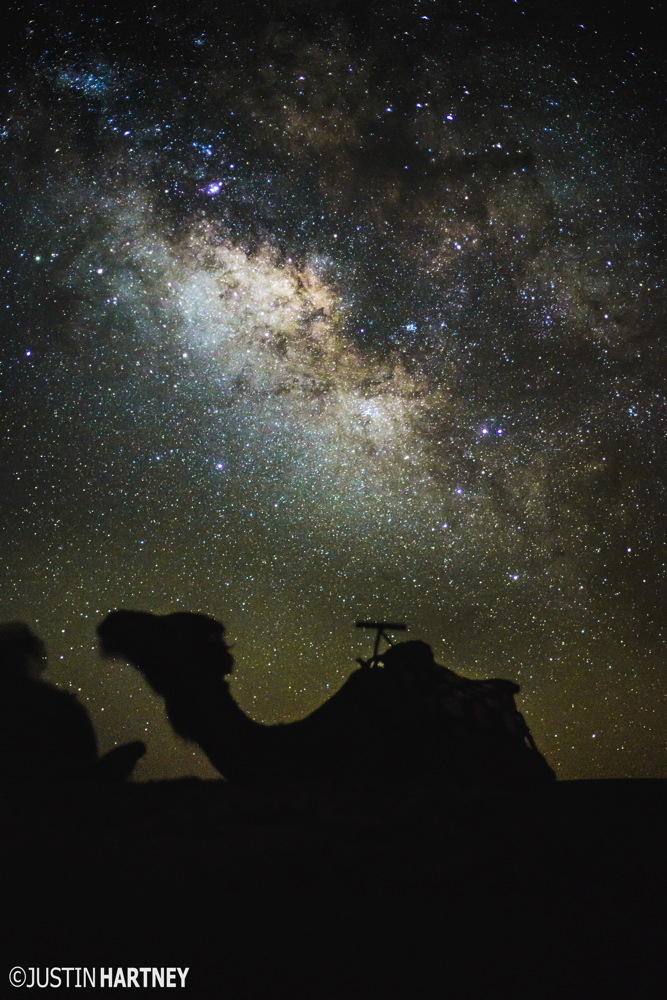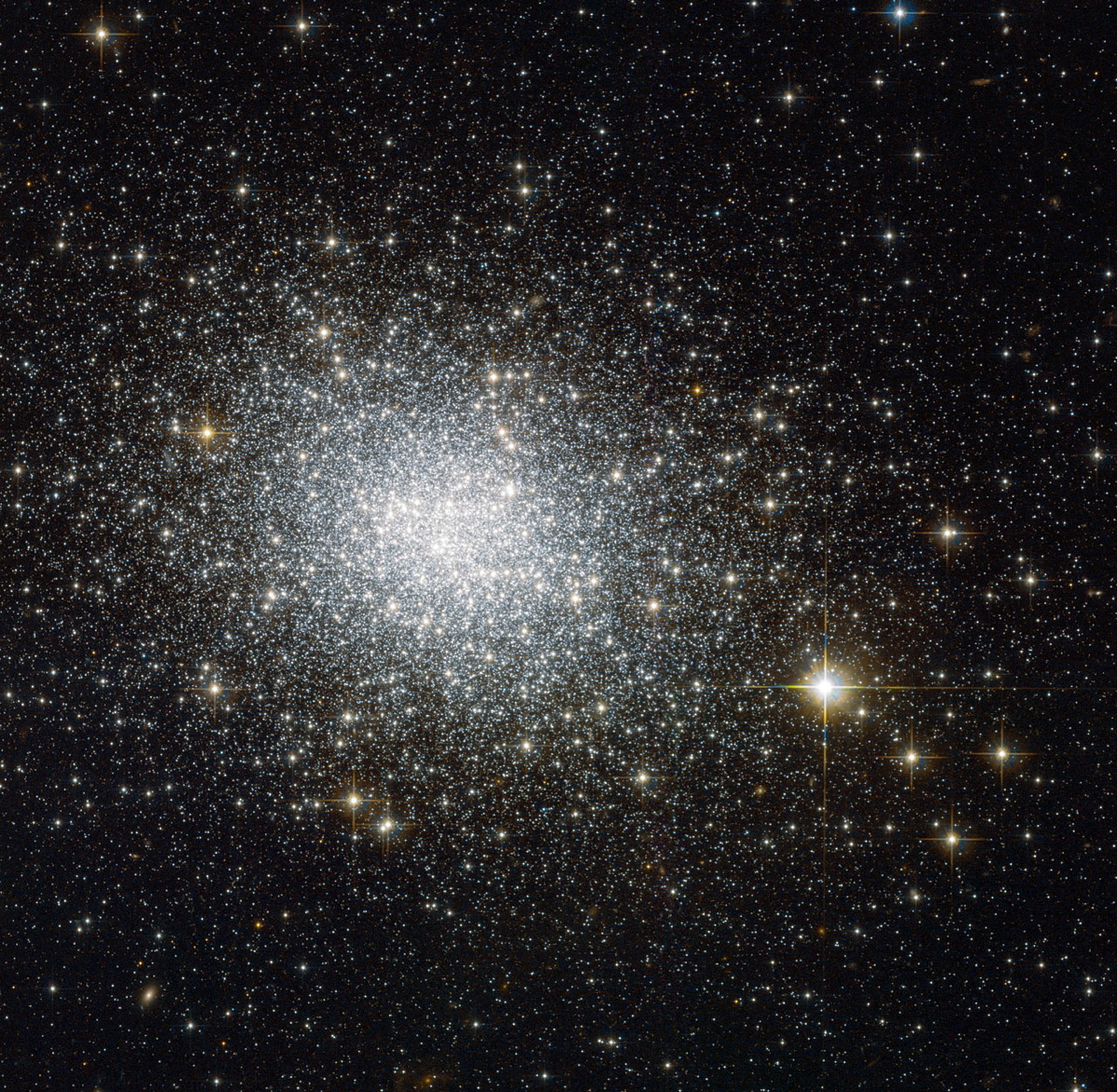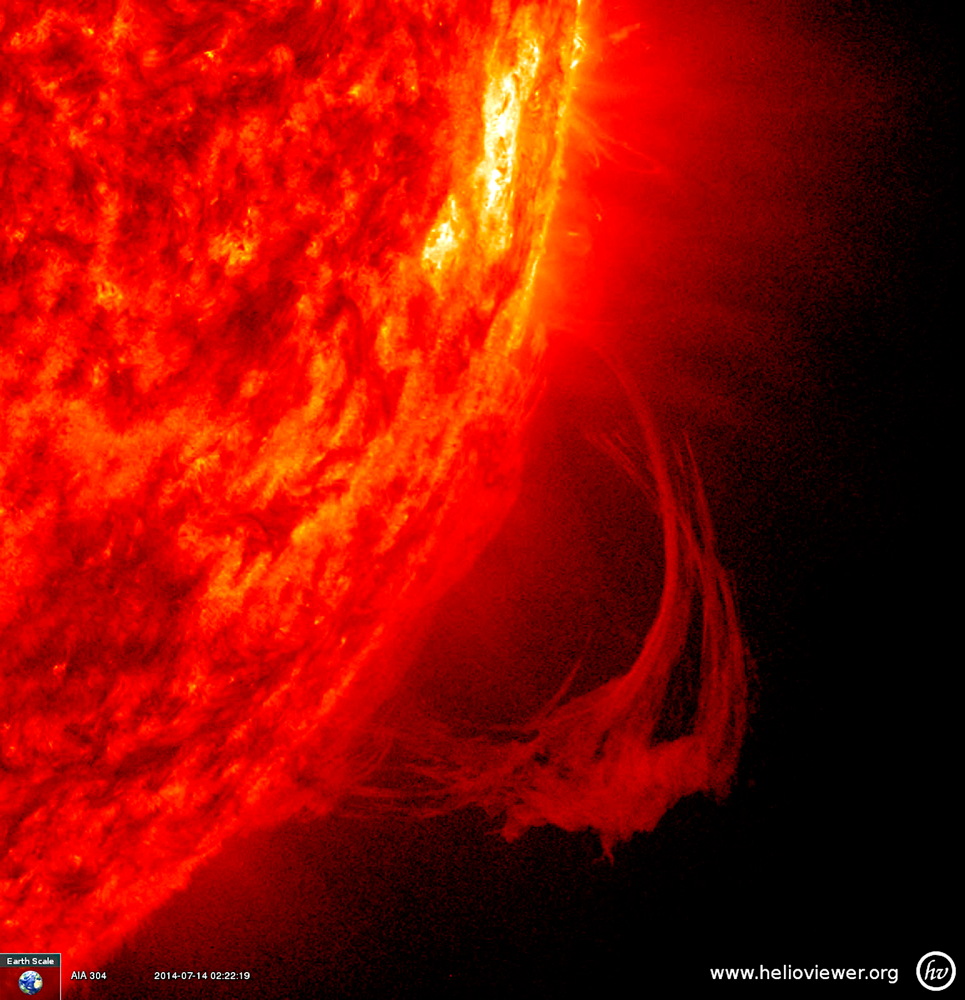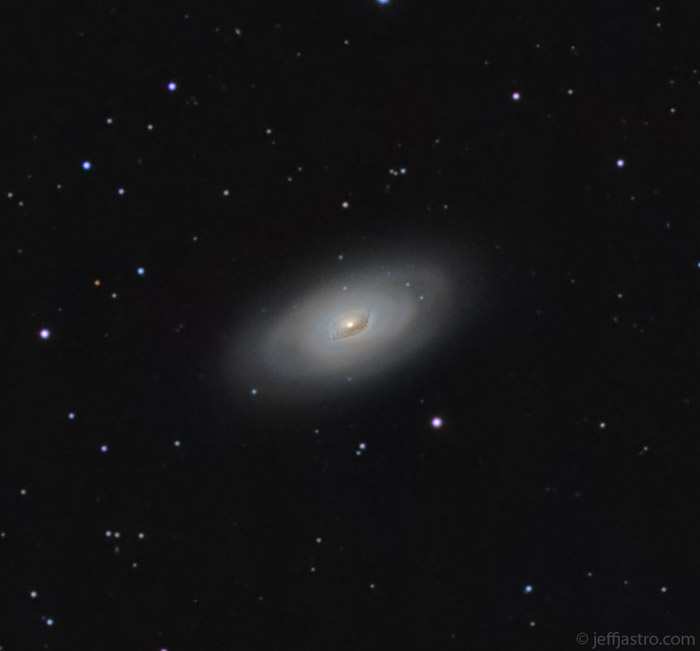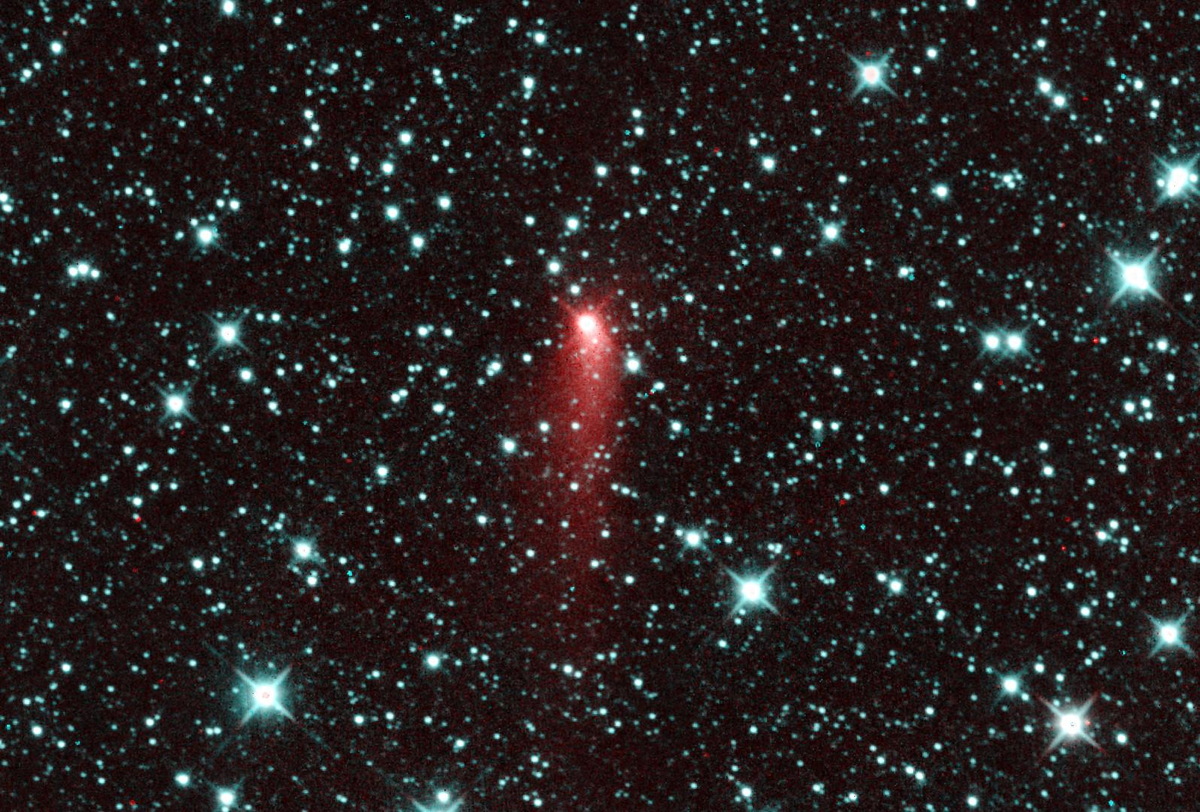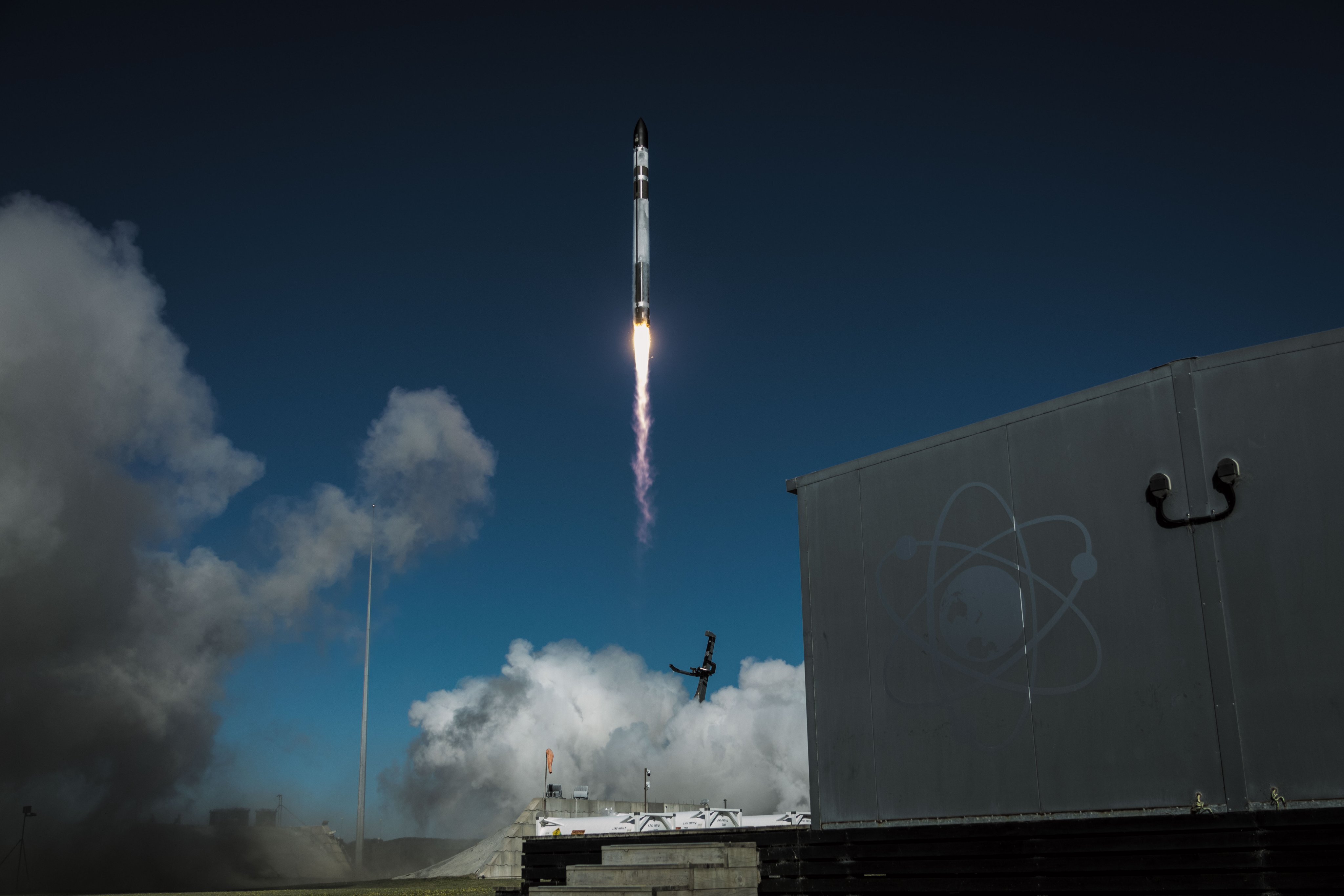Space Image of the Day Gallery (July 2014)
Deep, Deep Into the Night
Tuesday, July 15, 2014: This deep-field image shows a narrow area of the southern hemisphere's sky. It was taken by the Wide Field Imager (WFI), a camera mounted on the MPG/ESO 2.2-meter telescope located at the La Silla Observatory, Chile. This image represents one of five sky areas covered by the COMBO-17 survey (Classifying Objects by Medium-Band Observations in 17 filters), searching for cosmic objects in a relatively narrow area of the southern hemisphere's sky. The survey has already uncovered thousands of previously unknown deep sky objects, including over 25,000 galaxies, tens of thousands of stars and quasars heretofore undiscovered. In this photo, some of the most distant light comes from galaxies whose light travelled for nine or ten billion years before arriving on Earth. Image released July 14, 2014.
— Tom Chao
We Are the Champions!
Wednesday, July 16, 2014: Astronaut Alexander Gerst tweeted this photo of himself in the International Space Station on July 13, 2014, as he celebrated Germany's 2014 FIFA World Cup Final victory over Argentina. He wrote: “Just like our @DFB_Team_EN [German Football Association] I have fantastic support from my crew. Congrats from #ISS to the #WorldChamp. Great game! pic.twitter.com/sw4gGbtvwh” Gerst’s fellow astronauts, Reid Wiseman and Steve Swanson, "hoist" him in the air.
— Tom Chao
Fishing for the Moon
Thursday, July 17, 2014: Astrophotographer Dominick Iascone sent in a photo of the supermoon taken on July 12, 2014, in North Beach, Maryland. In an email message to Space.com, he writes, "You could barely see the moon when it first rose over the Chesapeake Bay because of the haze. Had to wait for it to climb a little."
— Tom Chao
Send Your Camel to Bed
Friday, July 18, 2014: Astrophotographer Justin Hartney sent in his favorite photo of the night sky that he took on a recent trip to the Sahara Desert. Technical details: Canon 5D Mark III and 50mm 1.8 at 1.8 8" ISO 6400. Image submitted July 16, 2014.
— Tom Chao
I Was So Much Older
Monday, July 21, 2014: Globular cluster NGC 121 lies in the constellation of Tucana (The Toucan). Globular clusters consist of old stars organized in big spherical structures that orbit the centers of their galaxies like satellites. NGC 121, discovered in 1835 by English astronomer John Herschel, exists in the Small Magellanic Cloud (SMC), one of our neighboring galaxies. NGC 121 measures around 10 billion years old, making it the oldest cluster in its galaxy. The other globular clusters of the SMC have an age of 8 billion years old or younger. The reason for the age discrepancy has not been discovered yet.
— Tom Chao
Back and Forth
Tuesday, July 22, 2014: Magnetic forces pulled back and forth a long arch of plasma (known as a “prominence”) during the week of July 10-16, 2014, before it vanished. The arcing plasma stayed together for a relatively long time. An Earth scale (lower left) provides a sense of the size of the sun’s eruption. Solar Dynamics Observatory captured the event in extreme ultraviolet light.
— Tom Chao
The Days Change at Night
Wednesday, July 23, 2014: The Very Large Telescope appears at ESO’s Paranal Observatory in northern Chile, with the Milky Way glowing overhead. The four Unit Telescopes of the VLT loom large at the right. At left stand the smaller Auxiliary Telescopes, with the large and small Magellanic Clouds above them. ESO Photo Ambassador Gabriel Brammer captured the scene with several shots taken at sunset and also later at night, then combined them together, showing the passage of time. Image released July 21, 2014.
— Tom Chao
Breaking space news, the latest updates on rocket launches, skywatching events and more!
Apollo 11 Ticker Tape Parade
Thursday, July 24, 2014: 45 years ago today, on July 24, 1969, the Apollo 11 mission splashed down in the Pacific Ocean, after successfully landing two American astronauts, Armstrong and Aldrin, on the moon on July 20. On August 13, New York City welcomed the three astronauts of the mission with a ticker tape parade on Broadway and Park Avenue, considered the largest such parade in the city’s history. Waving to the crowd in the lead car shown here are (L to R): Edwin E. Aldrin Jr., lunar module pilot; Michael Collins, command module pilot; and Neil A. Armstrong, commander.
— Tom Chao
Black Eye Galaxy, I Saw You Clearly
Friday, July 25, 2014: Astrophotographer Jeff Johnson of Las Cruces, New Mexico, sent in a photo of M64, the Black Eye Galaxy, taken April 3, 2014. He writes in an email message to Space.com: "I was hoping to collect more data, but our monsoon season is now upon us here in Las Cruces, so cloudy nights are the norm. Before this part of the season arrived, however, I collected enough data to bring out the Black Eye Galaxy …. This result is much deeper than my earlier attempt with a larger scope over 6 years ago."
— Tom Chao
I’m on My Way to Catalina
Tuesday, July 29, 2014: NEOWISE, the asteroid-hunting portion of the Wide-field Infrared Survey Explorer (WISE) mission, observed Comet C/2013 UQ4 (Catalina). On July 7, 2014, one day past perihelion (the point where it passed closest to the sun), it appeared as a highly active comet.
— Tom Chao

